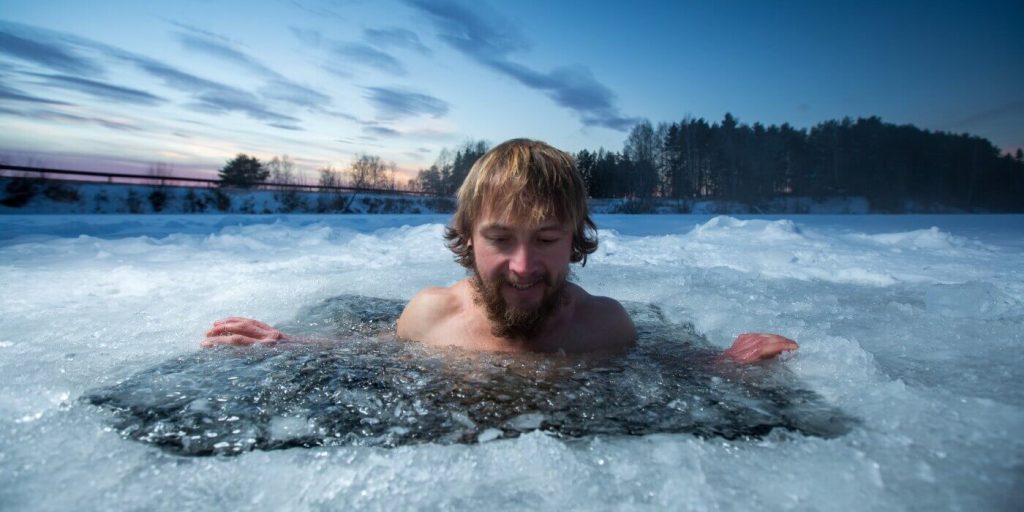Cryotherapy and cold plunge are two prominent methods for boosting health when considering modern recovery and wellness practices. Each employs the therapeutic use of cold but differs significantly in their approach and the sensations they deliver. This comparison will dissect the nuances between the two, providing insights into their respective processes, benefits, drawbacks, and the circumstances under which One might favor one over the other.
Understanding the principles, efficacy, and user preferences of cryotherapy and cold plunge can empower you to decide which treatment aligns best with your lifestyle and wellness goals. Both therapies have their advocates and have shown potential in muscle recovery, mood enhancement, and even pain relief. Still, the experience and results can vary widely between individuals.
Understanding Cryotherapy and Cold Plunge
Defining Whole Body Cryotherapy
Whole-body cryotherapy involves stepping into a cryo chamber and being exposed to extremely cold air, cooled by liquid nitrogen. The dry air and lack of humidity prevent frostbite during the brief session, typically lasting a few minutes. Many find this experience significantly more pleasant than exposure to the wet cold of plunging into an ice bath, as the dry air can make the air feel warmer than the actual temperature suggests.
Exploring the Cold Plunge Experience
The cold plunge, traditionally known as an ice bath or cold plunge, is precisely what it sounds like: a practice of plunging into an ice-cold water bath, usually for a period ranging from a few seconds to several minutes. Exposing the body to cold temperatures is believed to aid muscle recovery, boost energy, and improve mood and energy levels. The shock of the cold water is not only a physical challenge but can also contribute to building mental strength.
While the cold plunge might initially seem daunting, many find the experience invigorating and addictive. The exposure to cold temperatures can lead to increased blood flow upon exiting the water, and the subsequent warming of the body may cause a release of endorphins, creating a natural high that contributes to the therapy’s appeal.

Analyzing the Benefits and Drawbacks
Whole-body cryotherapy and cold plunge therapy offer shared benefits, such as enhanced muscle recovery and improved energy levels. However, they also present unique drawbacks that can influence personal preference. Factors such as the intensity of the cold, length of exposure, and physical sensations play a role in determining user satisfaction and the perceived value of each method in addressing specific wellness objectives.
Advantages of Whole Body Cryotherapy
- Provides Relief and Recovery
Whole-body cryotherapy is distinguished by its use of a cryo chamber and liquid nitrogen to provide relief and recovery through increased blood flow.
- Significantly More Pleasant Experience
The cold, dry air makes the experience significantly more pleasant than exposure to an ice bath’s wet chill.
- Reduced Risk of Frost Bite
Additionally, the lack of humidity prevents frostbite, allowing for safe exposure to extremely cold air in a controlled environment.
Pros
- It can lead to increased blood flow
- It may help reduce inflammation and promote faster healing
- The controlled environment of the cryo chamber ensures safety
- Many users report feeling a boost in mood and energy
Cons
- The cost of sessions can be prohibitive for some
- Cryo chambers are not as accessible
- Individuals with certain health conditions should use caution
- For some, the sensation of the freezing cold air can be overwhelming
Benefits of Cold Plunge Therapy
- May Treat Neurological Diseases
Cold plunge therapy, with its use of regular ice baths, has been shown in mice to potentially treat neurological diseases, suggesting a breadth of benefits beyond muscle recovery.
- Aids In Muscle Recovery
Fitness enthusiasts rave about its ability to make recovery after workouts faster.
- Increases Metabolic Rate
The metabolic rate increases during exposure to cold temperatures, which can improve circulation and skin health.
- Provides Pain Relief
Moreover, the numbing of nerves can provide pain relief, and the overall experience may boost energy and release endorphins, contributing to a positive shift in mood and energy levels.
Pros
- It quickly reduces core body temperature, which is beneficial for muscle recovery
- Exposure to cold temperatures can also lead to improved circulation
- It helps the release of endorphins
- It may enhance mood and energy levels
- Cold plunges have been associated with increased metabolic rates
- It may lead to better skin health
- Encourages mental fortitude
Cons
- The risk of hypothermia is a concern
- The initial shock of entering an ice bath can be a mental barrier
- It can be pretty uncomfortable
- It can be dangerous for those with health conditions, such as heart complications

Cryotherapy vs Cold Plunge: Effectiveness and Preferences
Choosing between body cryotherapy sessions and ice baths carries considerations of both effectiveness and personal preference. Cryotherapy treatments offer a quick, intense exposure to freezing cold in a controlled environment, which some find to be a more manageable mental challenge than taking a cold plunge. Conversely, ice baths provide a gradual cool down that penetrates the skin more deeply, potentially offering more extensive benefits for health and beauty but at a higher risk of hypothermia and heart complications.
Efficacy in Muscle Recovery and Pain Relief
Both cryotherapy and cold plunge therapies are lauded for their effectiveness in aiding muscle recovery and pain relief. The cold therapies reduce inflammation and may accelerate healing, making them popular among athletes and those seeking respite from chronic discomfort. While the methods differ, the end goal of both treatments is to harness the therapeutic qualities of cold to enhance physical well-being.
Accessibility and Practical Considerations
Accessibility to cryotherapy or cold plunge treatments may influence your choice, as cryotherapy typically requires visiting a specialized facility, while a cold plunge can often be done at home. Practical considerations, such as the cost of treatments and personal tolerance to cold, will also play a role in your decision-making process. It is essential to weigh these factors against the potential benefits to determine which therapy best suits your lifestyle and recovery needs.
Final Thoughts on Cryotherapy and Cold Plunge Choices
When deciding between whole-body cryotherapy and a cold plunge, consider the unique benefits of cryotherapy, such as its potential to boost collagen production and relieve sore muscles. While both modalities can aid in reducing inflammation, cryotherapy chambers offer a controlled environment where skin temperature can be precisely managed. This allows for a consistent experience that typically lasts no more than 10 minutes, making it a convenient option to incorporate into your daily routine. It is crucial to locate the nearest location that offers these services and weigh whether the wellness benefits align with your lifestyle and health objectives.
Contrastingly, the cold plunge, or an ice bath typically, immerses you in cold water that can shock the outer layers of your body and stimulate the sympathetic nervous system. This sudden drop in temperature makes the brain think you are experiencing extreme cold, which can lead to mental clarity and an invigorating sensation. Athletes and fitness enthusiasts often favor cold tub sessions for their effectiveness in muscle recovery and the ability to gradually return skin temperature to room temperature. However, a cold plunge might require more preparation and possibly a higher tolerance for the initial cold shock. Ultimately, your choice should be based on personal preference, accessibility, and the specific health and recovery goals you aim to achieve.
